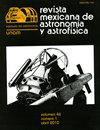无障碍天文学:如何使用低成本材料为盲人和视障学习者调整活动
IF 1.7
4区 物理与天体物理
Q3 ASTRONOMY & ASTROPHYSICS
Revista Mexicana de Astronomia y Astrofisica
Pub Date : 2022-08-01
DOI:10.22201/ia.14052059p.2022.54.19
引用次数: 0
摘要
过去,天文学被认为主要是一门视觉学科。但是时代变了,天文学教育领域已经发展到包括视觉、听觉和触觉等其他感官。多感官主题和教学方法吸引了新的受众来学习STEM主题。在本文中,我分享了我为大天文学推广工具包开发活动的经验。我首先探讨了一些例子和策略,即廉价材料如何通过通用设计来修改或扩展活动,目的是减少或消除参与的障碍。本文章由计算机程序翻译,如有差异,请以英文原文为准。
ACCESSIBLE ASTRONOMY: HOW TO ADAPT ACTIVITIES FOR BLIND AND VISUALLY IMPAIRED LEARNERS USING LOW COST MATERIALS
In the past, astronomy was considered to be primarily a visual subject. But times have changed, and the field of astronomy education has evolved to include other senses such as sight, sound and touch. Multisensory themes and methods of instruction have attracted new audiences to learn about topics in STEM. In this paper, I share my experiences in developing adaptations of activities for the Big Astronomy Outreach Toolkit. I begin by exploring examples and strategies of how inexpensive materials can be used to modify or sometimes expand upon activities through universal design, with the goal of reducing or eliminating barriers to participation.
求助全文
通过发布文献求助,成功后即可免费获取论文全文。
去求助
来源期刊

Revista Mexicana de Astronomia y Astrofisica
地学天文-天文与天体物理
CiteScore
1.30
自引率
10.00%
发文量
14
审稿时长
>12 weeks
期刊介绍:
The Revista Mexicana de Astronomía y Astrofísica, founded in 1974, publishes original research papers in all branches of astronomy, astrophysics and closely related fields. Two numbers per year are issued and are distributed free of charge to all institutions engaged in the fields covered by the RMxAA.
 求助内容:
求助内容: 应助结果提醒方式:
应助结果提醒方式:


